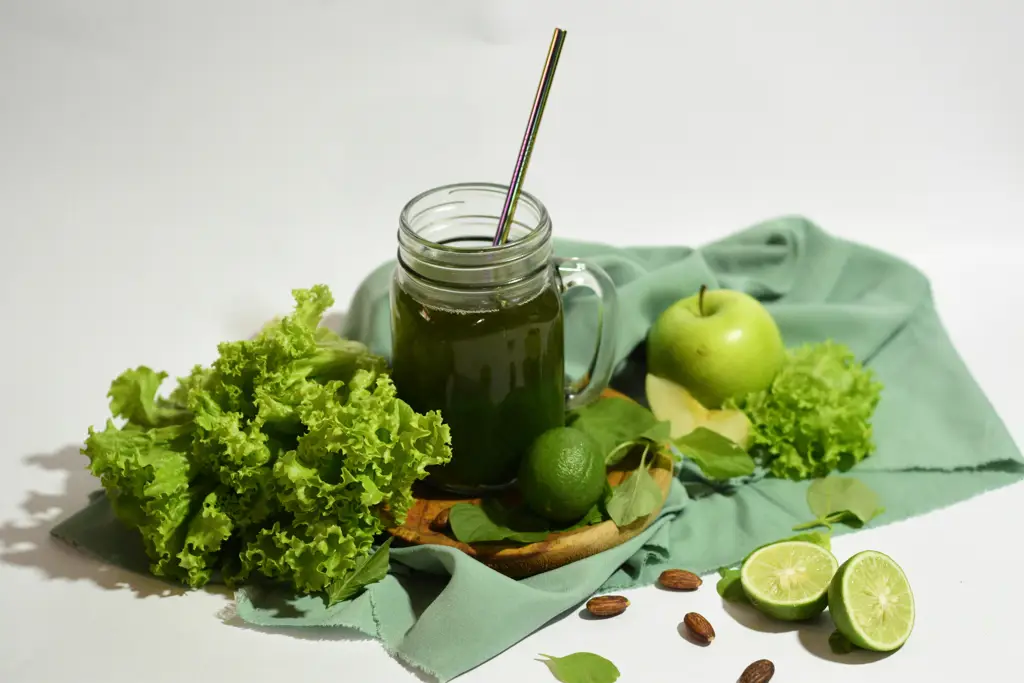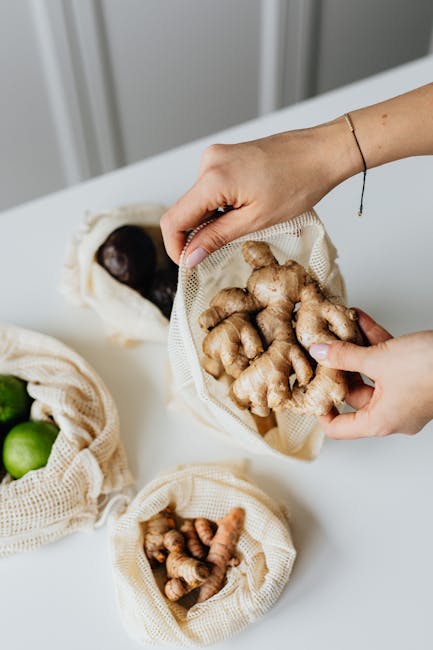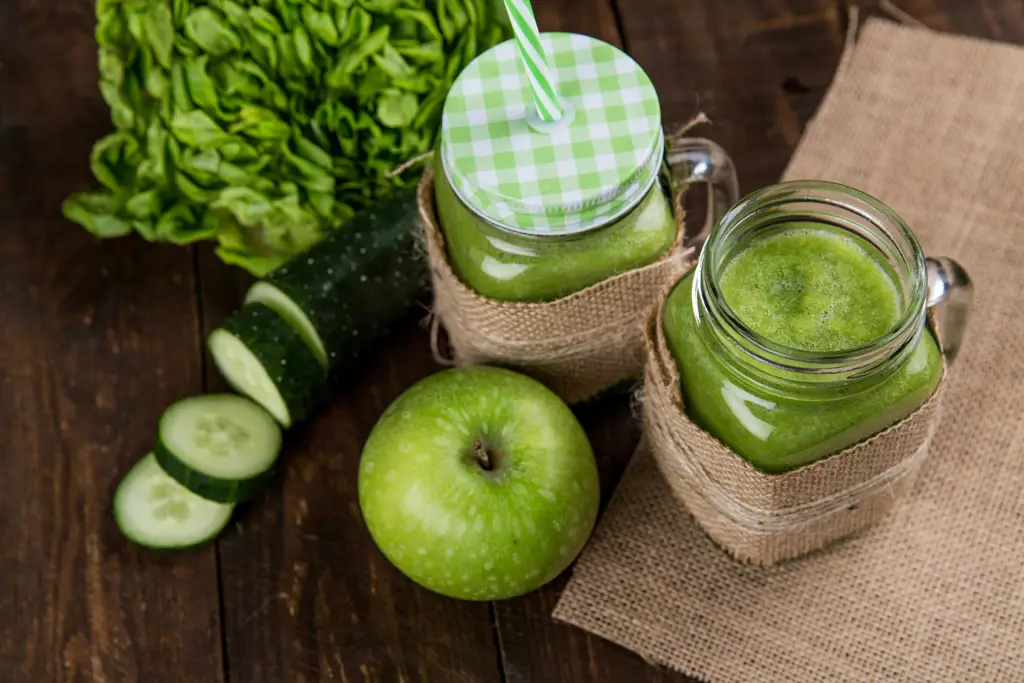The concept of detoxifying the body through juice consumption, while enjoying a surge in popularity in recent decades, boasts a much richer and more nuanced history than many realize. While the modern detox juice cleanse as a commercialized product is a relatively recent phenomenon, the underlying principle of using fruits and vegetables for cleansing and improved health is deeply rooted in various traditional medicine systems across the globe. Ancient cultures, from Ayurvedic practices in India emphasizing the importance of digestive health to traditional Chinese medicine’s focus on balancing the body’s energies through diet, have long recognized the power of plant-based foods in promoting well-being. These ancient traditions often involved consuming concentrated forms of fruits and vegetables, precursors to the modern juice cleanse, to address imbalances and support the body’s natural detoxification processes.
The modern green juice craze, however, is largely a product of the late 20th and early 21st centuries. Fueled by the growing awareness of health and wellness, the juice cleanse emerged as a quick and convenient method for achieving purported weight loss and improved health. The rise of celebrity endorsements and social media further propelled its popularity, transforming it into a significant industry. While scientific evidence supporting the long-term effectiveness of detox juice cleanses for weight loss is limited, the appeal remains strong, driven by the perceived benefits of increased nutrient intake and the elimination of processed foods. Studies show that a significant portion of the population, particularly young adults and women, have engaged in juice cleanses, highlighting its cultural impact.
Interestingly, the emphasis on detox itself is a point of contention among health professionals. The human body possesses a robust and efficient detoxification system, primarily the liver and kidneys, which continuously filter and eliminate toxins. While a healthy diet rich in fruits and vegetables, including those found in green juices, can support these natural processes, the idea of a juice cleanse detoxifying the body beyond its inherent capabilities is often debated. However, the nutritional benefits of green juices are undeniable. They are packed with vitamins, minerals, and antioxidants, offering a concentrated dose of essential nutrients. A single serving of a well-balanced green juice can often provide a significant portion of the recommended daily intake of certain vitamins, such as Vitamin A and Vitamin C. This increased nutrient intake can contribute to improved energy levels, enhanced immunity, and potentially aid in weight management when combined with a balanced diet and exercise regime.
Despite the ongoing debate surrounding its efficacy as a detox, the popularity of the detox green juice for weight loss remains a significant cultural phenomenon. It reflects a broader societal interest in wellness, a desire for quick-fix solutions, and a growing awareness of the importance of nutrition. The future likely holds a more nuanced understanding of its benefits and limitations, with a greater emphasis on the importance of sustainable dietary habits and holistic approaches to health and weight management rather than solely relying on short-term cleanses. The enduring appeal, however, highlights the powerful connection between culture, dietary trends, and the ongoing pursuit of a healthier lifestyle.
Ingredients and Measurements
This Detox Green Juice recipe is designed to be both effective and delicious, supporting your weight loss journey with a nutrient-rich blend. Precise measurements are crucial for achieving the optimal balance of flavors and nutritional benefits. We’ve carefully selected ingredients known for their detoxifying and metabolism-boosting properties. Always use fresh, high-quality ingredients for the best results.
Leafy Greens (1 cup packed): The foundation of this juice lies in its leafy green component. We recommend using a mix for a wider range of nutrients. Consider a combination of spinach (½ cup), kale (¼ cup), and romaine lettuce (¼ cup). Spinach provides iron and vitamins A and K. Kale offers vitamin C and fiber. Romaine lettuce contributes to hydration and adds a milder flavor. Avoid using wilted or discolored greens.
Cucumber (½ medium): Cucumber is a hydrating powerhouse, low in calories and rich in electrolytes. Its mild flavor complements the other ingredients beautifully. Choose firm, crisp cucumbers without blemishes. Peeling is optional; leaving the peel on adds extra fiber.
Celery (2 stalks): Celery is another excellent source of hydration and fiber, contributing to feelings of fullness. It also contains antioxidants and anti-inflammatory compounds. Select crisp, vibrant green celery stalks.
Green Apple (1 medium): The sweetness of the green apple balances the bitterness of some greens, making the juice more palatable. Green apples are lower in sugar than red apples, making them a healthier choice for weight management. Choose a firm, unblemished apple. Core and chop before juicing.
Ginger (1-inch piece): Ginger adds a spicy kick and is known for its anti-inflammatory properties and potential to aid digestion. Start with 1 inch and adjust to your preference. Use fresh ginger for optimal flavor and benefit. Peel before juicing.
Lemon (½): Lemon juice adds a refreshing tang and a boost of vitamin C. It also helps to enhance the absorption of other nutrients. Use fresh lemon juice for the best taste and nutritional value.
Optional Additions (adjust to taste): You can personalize this recipe with optional additions such as a small handful of mint leaves for a refreshing twist, or a few sprigs of parsley for extra vitamins and minerals. Remember to keep additions moderate to maintain the overall balance of the juice.
Important Note: These are suggested measurements. You can adjust the quantities to your liking, but maintain a balance between the different ingredients to ensure a well-rounded nutritional profile and pleasant taste. If you are new to juicing, start with smaller quantities and gradually increase the amount as you get accustomed to the flavor. Consult with your doctor or a registered dietitian before making significant dietary changes, especially if you have underlying health conditions.
Preparation Phase (Washing, Peeling, Chopping)
The success of your detox green juice hinges on the quality of your ingredients. Thorough preparation is crucial not only for taste and texture but also for hygiene and safety. This section details the meticulous steps involved in washing, peeling, and chopping the produce for your weight-loss green juice.
Washing your produce is paramount. Pesticides and other contaminants can linger on the surface of fruits and vegetables. Begin by rinsing each item under cool, running water. For leafy greens like kale or spinach, gently swish them in a large bowl of water to dislodge any dirt or debris. Avoid using soap, as it can leave residues that are difficult to remove completely and may affect the flavor of your juice.
Next, we move on to peeling. The need for peeling varies depending on the ingredient. For example, apples, carrots, and cucumbers generally benefit from peeling to remove the outer skin which can sometimes be tough or bitter. Use a vegetable peeler to efficiently remove the skin, ensuring a smooth, even surface. With citrus fruits like lemons or limes, you may only need to scrub the exterior thoroughly to remove any wax or residue. Avoid peeling overly sensitive produce such as ginger or certain types of root vegetables as the peel often contains beneficial nutrients.
Chopping is the final stage of preparation and significantly impacts the juicing process. Consistent chopping ensures even extraction of juice. Aim for roughly similar-sized pieces for each ingredient. This will prevent some pieces from being processed more than others, leading to a more balanced and efficient juicing experience. For example, if using one medium-sized cucumber (approximately 10 inches long), chop it into 1-inch thick rounds. Similarly, if using 1 cup of kale, roughly chop it into 1-inch pieces. A sharp knife is essential for clean cuts and efficient work. For softer fruits and vegetables, such as berries or tomatoes, it’s advisable to cut them in halves or quarters to facilitate easy juicing.
Quantity recommendations for a single serving of detox green juice: This recipe utilizes approximately 1 cup of leafy greens (kale, spinach, or a mix), ½ cup of cucumber, ½ cup of apple (cored), 1 small carrot (approximately 4 inches long), 1 inch piece of ginger (peeled), and ½ a lemon (juiced). Adjust these quantities to suit your preferences and the size of your juicer. Remember to always wash your hands thoroughly before and after handling produce to maintain optimal hygiene.
Professional Recommendation: For optimal nutrient retention, aim to juice your produce immediately after preparation. Prolonged exposure to air can lead to nutrient degradation. If you are making juice in advance, store it in an airtight container and refrigerate for no longer than 24 hours.
Juicing Technique: Mastering the Art of Green Goodness
Creating a delicious and effective detox green juice requires more than just throwing ingredients into a juicer. This section details the optimal juicing technique to maximize nutrient extraction and ensure a smooth, palatable result. Follow these steps for best results.
Preparation is Key: Before you begin, wash all your produce thoroughly. Remove any stems, peels (unless otherwise specified in your recipe), and blemishes. For leafy greens like kale or spinach, it’s helpful to roughly chop them into smaller pieces to aid the juicing process and prevent clogging. Harder vegetables like carrots and celery can be chopped into 2-3 inch pieces. Avoid over-stuffing your juicer; this can lead to inefficient juicing and potentially damage your machine.
Ingredient Selection & Quantities: A typical detox green juice recipe might include (adjust quantities based on your juicer’s capacity and personal preferences):
- 1 cup leafy greens (kale, spinach, romaine lettuce)
- 1/2 cucumber (about 6 inches)
- 1/2 green apple (about 1 medium)
- 1/2 inch ginger (about 1 tablespoon grated)
- 1 stalk celery (about 6 inches)
- 1/2 lemon (optional, for added flavor and vitamin C)
Remember to adjust these quantities based on your juicer’s capacity and your personal taste preferences. You can experiment with different combinations of fruits and vegetables to find your perfect blend.
The Juicing Process: Feed ingredients into your juicer according to the manufacturer’s instructions. Generally, it’s best to start with the harder vegetables (carrots, celery) and then add the softer fruits and leafy greens. This prevents clogging and ensures even juicing. If your juicer has a feed chute, use it to gradually introduce the ingredients. Don’t force large pieces into the chute, as this could damage the juicer.
Troubleshooting Common Issues: If your juicer starts to struggle, turn it off and remove any large pieces that might be causing a blockage. Regular cleaning is crucial to prevent clogging and maintain optimal performance. Rinse the juicer parts immediately after use, and follow the manufacturer’s instructions for thorough cleaning. If your juice is too pulpy, you may need to adjust the ingredients or use a juicer with a higher pulp extraction rate.
Post-Juicing Steps: Once juicing is complete, immediately pour the juice into a glass and consume it within 30 minutes to maximize the nutrient content. Avoid storing the juice for extended periods as it can oxidize and lose its beneficial properties. If you must store it, transfer it to an airtight container and refrigerate it for no longer than 24 hours.
Professional Recommendation: Consult with a healthcare professional or registered dietitian before starting any detox program, especially if you have underlying health conditions. They can help you create a safe and effective plan tailored to your individual needs. Always prioritize a balanced diet and lifestyle alongside juicing for optimal weight loss and overall health.
Storage Instructions
Proper storage of your Detox Green Juice is crucial to maintaining its freshness, nutritional value, and overall effectiveness in supporting your weight loss journey. Following these guidelines will ensure you get the most out of each bottle and avoid any potential spoilage or loss of beneficial nutrients.
Immediately after receiving your juice, refrigerate it. This is the most important step. The ideal temperature for storing your Detox Green Juice is between 35°F and 40°F (1.7°C and 4.4°C). Do not leave it at room temperature for extended periods, as this can lead to rapid bacterial growth and a significant reduction in the juice’s quality. Even short periods at room temperature can diminish the potency of the fresh produce contained within.
Store the juice in its original container. The bottle is designed to maintain the juice’s integrity and prevent oxidation. Transferring the juice to another container can expose it to air and light, accelerating degradation. Ensure the cap is tightly sealed to minimize air exposure.
Consume the juice within 72 hours of opening. While our careful processing methods extend the shelf life, once opened, the juice is susceptible to oxidation and microbial contamination. For optimal freshness and maximum health benefits, it’s best to consume the juice within three days of opening. Do not attempt to freeze the juice. Freezing can cause the juice to separate, altering its texture and potentially impacting its nutritional profile.
Observe the juice before consumption. Before you drink your juice, visually inspect it. Pay close attention to the color, smell, and texture. Any significant changes, such as unusual discoloration, off-putting odor, or separation of ingredients, indicate that the juice may have spoiled and should be discarded. Trust your senses; if something seems amiss, it’s best to err on the side of caution.
Quantity Considerations: If you purchase a larger quantity of juice (e.g., a multi-pack), prioritize consuming the oldest bottles first. This ensures that you maximize the freshness of your juice throughout your weight loss program. Proper rotation of your supply will prevent waste and maintain the consistency of the flavor and nutritional benefits.
Avoid extreme temperature fluctuations. Do not place the juice near a heat source such as a stove or oven, or in direct sunlight. Similarly, avoid placing the juice in areas subject to significant temperature changes, as these fluctuations can affect the quality and taste of the juice.
Following these storage instructions diligently will help you maximize the effectiveness of our Detox Green Juice for Weight Loss and ensure a consistently enjoyable and beneficial experience. Remember, proper storage is key to achieving your health goals.
Serving Suggestions (Optional additions)
While our Detox Green Juice is delicious and effective on its own, you can enhance its flavor and nutritional profile with a few carefully chosen additions. Remember, moderation is key, as adding too many ingredients can alter the juice’s detoxifying properties and potentially increase its caloric content, hindering your weight loss goals.
For a zesty kick, consider adding a squeeze of fresh citrus. A half to a whole lime or lemon will brighten the flavor and provide a boost of Vitamin C, a powerful antioxidant. Avoid adding too much citrus, as excessive acidity can be harsh on the stomach. Squeeze the juice directly into the glass after you’ve poured your juice, stir gently, and enjoy.
If you’re looking to boost the creaminess and texture of your juice, a small amount of healthy fat can work wonders. A teaspoon of chia seeds, for example, will add a subtle nutty flavor and provide omega-3 fatty acids, which are beneficial for overall health. Alternatively, a tablespoon of unsweetened almond or coconut milk can create a smoother, more luxurious texture. Adding more than this, however, may negate some of the detoxifying effects and increase the calorie count significantly.
To enhance the nutritional value further, consider adding a small amount of fresh herbs. A few sprigs of fresh mint or cilantro can add a refreshing touch and provide additional vitamins and minerals. Simply muddle the herbs gently before adding them to the juicer or add them to the finished juice and stir. Don’t overdo it; a little goes a long way to avoid overwhelming the flavor of the green juice.
For a touch of natural sweetness, you could add a small piece of fruit, but proceed with caution. A quarter of a small apple or a few berries (strawberries, blueberries, raspberries) can provide a subtle sweetness without significantly impacting the sugar content. However, adding too much fruit will defeat the purpose of the detox, increasing the sugar intake and potentially hindering weight loss. We strongly advise against adding high-sugar fruits like bananas or mangoes.
Important Note: Always ensure that any additions you make are fresh and of high quality. Avoid using canned or processed ingredients, as these can contain added sugars, preservatives, and unhealthy fats that counteract the benefits of the detox juice. Start with small quantities of any additions and adjust according to your preference. Listen to your body and pay attention to how different additions affect you. If you experience any digestive discomfort, reduce or eliminate the addition.
Experiment with different combinations of these optional additions to find your perfect personalized Detox Green Juice recipe. Remember, consistency is key to achieving your weight loss goals. Enjoy your journey to a healthier you!
Tips and Tricks (for maximizing nutrients and taste)
Creating a delicious and nutrient-packed detox green juice requires more than just throwing some greens in a blender. Following these tips and tricks will help you maximize both the nutritional value and the taste of your juice, ensuring you enjoy the process and reap the benefits.
Prioritize Leafy Greens: The foundation of any great green juice is a generous helping of leafy greens. Aim for at least 1-2 cups of a mix like spinach, kale, romaine lettuce, or a combination. Spinach offers a mild flavor and is readily available, while kale packs a nutritional punch but can be slightly bitter. Romaine lettuce adds a crispness and softens the overall taste.
Balance Flavors Strategically: The bitterness of some greens can be easily countered with sweet and tart elements. Add about ½ a cup of fruits like green apple, cucumber, or berries for sweetness. A small piece (about ¼) of a lemon or lime adds tartness that brightens the flavor profile and aids digestion. Experiment with different fruit combinations to discover your favorite flavor profile. For example, a combination of green apple and pear provides a naturally sweet and refreshing taste.
Boost Nutrient Density with Vegetables: Don’t limit yourself to just greens and fruits! Incorporate nutrient-rich vegetables like celery (1-2 stalks), carrots (1 medium), or bell peppers (½ a medium pepper). Celery adds a subtle, refreshing taste and is a good source of fiber. Carrots contribute sweetness and beta-carotene, while bell peppers offer vitamins and a vibrant color. Remember to adjust quantities based on your preferred taste and the size of your juicer.
Consider Adding Healthy Fats and Protein (Optional): For a more satiating and nutrient-complete juice, consider adding a small amount of healthy fats and/or protein. A teaspoon of nut butter (almond, cashew, or peanut) or a tablespoon of chia seeds can add creaminess and healthy fats. A small amount of protein powder (whey, soy, or plant-based) can further enhance satiety, but use sparingly to avoid altering the taste significantly. Remember to adjust the liquid accordingly to maintain the desired consistency.
Master the Art of Juicing: Use a high-quality juicer that extracts maximum juice and minimizes pulp. If using a centrifugal juicer, process in batches to avoid overloading the machine. With a masticating juicer, you can usually process larger quantities more efficiently. For the best results, wash and thoroughly dry all produce before juicing to prevent oxidation and maintain the vibrant color of your juice.
Consume Immediately for Maximum Benefits: Green juices are best enjoyed fresh. The longer they sit, the more nutrients and enzymes they lose. Consume your juice immediately after juicing to maximize its nutritional value and enjoy its fresh taste. If you need to store leftovers, pour it into an airtight container and refrigerate for no more than a few hours. However, remember that the nutritional value will diminish over time.
Listen to your body: Pay attention to how different ingredients affect you. If a certain vegetable or fruit causes digestive discomfort, reduce the amount or eliminate it from your recipe. Experiment and find the perfect balance of flavors and nutrients that suit your individual preferences and health needs.
Detox Green Juice for Weight Loss: Recommendations
This delicious and nutritious detox green juice is designed to support your weight loss journey by providing a concentrated dose of vitamins, minerals, and antioxidants. It’s important to remember that this juice is a supplement to a healthy diet and exercise program, not a replacement. For optimal results, combine this juice with a balanced meal plan and regular physical activity.
Nutritional Information (per 8oz serving): Approximate values will vary based on specific ingredients and their proportions. This is an example based on a common recipe including kale, spinach, cucumber, celery, green apple, and lemon:
- Calories: Approximately 80-100
- Protein: 2-3g
- Carbohydrates: 15-20g
- Fiber: 3-5g
- Vitamins A, C, K, and various B vitamins
- Minerals: Potassium, Magnesium, Iron
Note: These values are estimates and can change based on the specific ingredients and their quantities.
Serving Suggestions: Enjoy this juice as part of a healthy breakfast or as a refreshing mid-afternoon snack. For best results, consume it within 30 minutes of juicing for maximum nutrient retention. You can also incorporate it into your smoothies for an extra boost of nutrients and flavor. Try adding a scoop of your favorite protein powder for a more filling and satisfying experience.
Storage Conditions: For optimal freshness and nutrient preservation, it is recommended to consume the juice immediately after juicing. If storing, refrigerate in an airtight container for up to 24 hours. The color and flavor may slightly change over time, but it should still be safe to consume within this timeframe. Avoid freezing the juice, as this can alter its texture and nutritional value.
Complementary Dishes: This juice pairs well with a variety of healthy meals. Consider pairing it with:
- A light breakfast: Oatmeal with berries, a small portion of Greek yogurt, or whole-wheat toast with avocado.
- A healthy lunch: A large salad with lean protein (chicken, fish, or tofu), or a hearty vegetable soup.
- A nutritious dinner: Baked salmon with roasted vegetables, or a lentil stew.
Remember to maintain a balanced diet and incorporate regular physical activity for optimal weight loss results. This juice is a valuable tool to support your health goals, but it’s not a magic bullet.
Important Disclaimer: While this juice is generally healthy, individuals with specific dietary restrictions or allergies should carefully review the ingredients. If you have any underlying health conditions or are taking medications, consult with your doctor or a registered dietitian before incorporating this juice into your diet. This information is for general knowledge and does not constitute medical advice.





